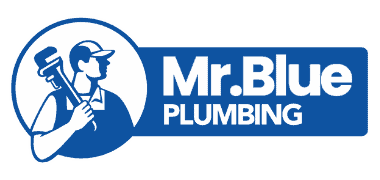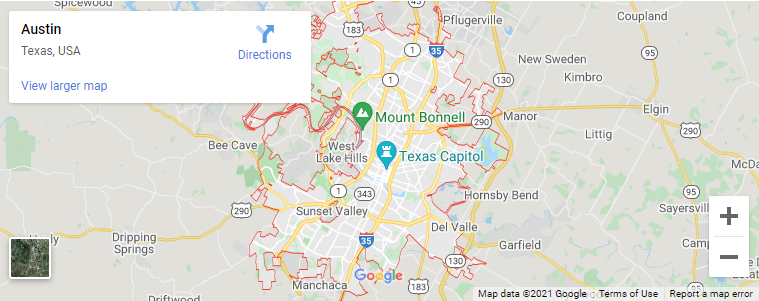Contents (Click To Jump)
- 1 How Much Does Reverse Osmosis Installation Usually Cost in Austin?
- 2 What Are the Most Common Water Contaminants in Austin?
- 3 Can Residents in Austin Benefit From Reverse Osmosis Treatment?
- 4 How Often Should Residents in Austin Replace Reverse Osmosis Prefilters?
- 5 Do You Need a Water Softener With Your Reverse Osmosis System in Austin?
How Much Does Reverse Osmosis Installation Usually Cost in Austin?
The reverse osmosis system is a water filter option that catches and reduces the number of contaminants entering your home. This filtration system is added to your home and filters all water before it comes out of the faucet. The average cost of a reverse osmosis installation costs around $450 to $500 for most Austin residents. The price of this system does vary in your home and depends on several different cost factors.
Location of Reverse Osmosis Filter and Membrane
Where you would like to place the reverse osmosis filter in your home can determine the price of the installation cost. If you want just one filter placed in your kitchen, the charge is lower than other installation jobs. However, you can add it to other locations or even throughout your entire home to make sure that you get the purest water filtering throughout your home. The more filters required, the more the cost.
Parts
Several parts need to be purchased and applied when you add reverse osmosis to your home. Aside from the filter, you need connectors, fittings, and adapters that our plumbers keep on hand before they go in to do the job. Depending on your plumbing systems, some of these parts may need to be specially ordered, which can increase the job’s overall price.
Labor
Installing the reverse osmosis properly into your home takes time. Drilling and mounting the appropriate parts and installation system can take a couple of hours for just one filter. If you have the filters installed throughout your Austin home, then the cost of labor will increase for the job. Labor includes the installation and checking the system to ensure it is working correctly and then cleaning up after the job is done. Once our plumbers are entirely done with the job, that is when the labor portion of the bill stops.
What Are the Most Common Water Contaminants in Austin?
The majority of the drinking water found in Austin comes from the Colorado River. This flowing water deposits into Lake Austin and Lake Travis, where the water is treated and used for consumption and distribution throughout the City. There are a few contaminants that have been found in the water in Austin.
- PFAs
- Lead
- Chloramine
- DBPs
PFAs
Known as polyfluoroalkyl substances, PFAs are known chemicals that make their way into regular drinking water. They are found on non-stick pots, pans, and other household items that rub off over time and find themselves in the water source. They are known to be toxic, and in Austin, there are higher levels found than in other areas. The higher levels are mainly due to the ever-growing population in the area and the access to these items. They are purchased regularly by residents in the area, keeping the PFAs going through the water system.
Lead
Another significant contaminant that is found in Austin is lead. With many of the older pipes in older homes and water systems starting to deteriorate, lead is on the rise in the Austin area. While many of these systems have been replaced, some have yet to be replaced in older properties. Over time, the corrosion on these pipes allows the lead to break away, and it begins floating the water system, making its way into the drinking water. While this water is treated, some smaller particles find their way through the filtration system.
Chloramine
Before your water gets to your home, it is treated with a type of disinfectant. Some of these disinfectants are less appealing than others because of the odor, smell, or taste you experience when drinking or using your water. To disinfect the tap water that is supplied in Austin, chloramine is used. Many find that this gives the water a bad taste and is not always appealing for residents. With the reverse osmosis filtration system, this chloramine is significantly reduced and improves the taste of your drinking water once it comes out of your faucet.
DBPs
Another group of emerging contaminants has a reaction when they are met with the chlorine used to disinfect the tap water. These are known as disinfection byproducts, and they have been known to circulate in Austin’s tap water. Presently, they do not have a steady regulation with the Environmental Protection Agency. Still, high levels could be extremely toxic to an Austin resident if consumed regularly over time. Some of these can be traced back to cancer, especially if the exposure has lasted for years without treatment.
Can Residents in Austin Benefit From Reverse Osmosis Treatment?
When you include a reverse osmosis treatment in your home, you are only gaining benefits. This treatment gives another layer of protection in your drinking water, filtering out any other particles and unwanted contaminants that may have leaked through the filtration system by the City of Austin’s water filtration system. These undesirable contaminants are removed from your water system, allowing you to have clean and pure water options available.
Another benefit is the reduction of sodium levels in your water. While this isn’t something that most residents in Austin consider, there are levels of sodium that filter throughout your water system. While many residents may not have issues with sodium, some residents need to monitor their sodium levels for their health. If high sodium is a risk for you, this process will benefit your overall health. Sodium build-up on your water pipes can also cause unwanted build-up and later corrosion. The corrosion could require more plumbing maintenance than you may or may not have expected.
Parasites sometimes come into your home through your water. In most standard filtration systems, the smaller ones can work their way through just like bacteria and get into your system during consumption. Because the water Austin residents drink comes from natural sources, the potential for animals to contaminate the water is higher than in certain areas. Also, the filtration system used by the City of Austin does try to capture them before the water is released into the residential areas. Unfortunately, some toxic ones can make their way through periodically. Giardia is one of the more common parasites that enter the system through water and can be deadly for children if it is left untreated. With a reverse osmosis treatment, this is captured and kept from going into your faucets for consumption.
One of the final benefits of your water system when you use reverse osmosis is maintaining the quality of your pipes and water system. Because these contaminants are caught, they cannot add further corrosion to your system and prolong the life of your system.
How Often Should Residents in Austin Replace Reverse Osmosis Prefilters?
Your best practice for replacing the prefilters in your reverse osmosis system is to have them changed every 6 to 12 months to keep your water as clean and pure as possible. These filters collect quite a bit of contaminant and can get clogged quickly. Once the filters are full, they cannot properly filter the water, and these contaminants could be released back into the system. When you change one prefilter, it is best to go ahead and have all filters changed at once so that you know all the water coming into your home is just as pure in your kitchen as it is in the bathroom.
If you do not have additional treatments on your water system and only use the reverse osmosis treatment, you could find yourself replacing these filters more frequently. If they have to store hard minerals due to the hard water in the area, other contaminants will sneak through the system once the filter is full and not functioning correctly.
Do You Need a Water Softener With Your Reverse Osmosis System in Austin?
Like many cities in Texas, Austin has hard water compared to other areas of the country. It is not the hardest in the state, but it has a strong potential for gathering unwanted impurities because it falls when it rains, and the water carries dissolved minerals throughout the City. To get the most out of your reverse osmosis system, you can add a water softener system that can quickly remove many of the minerals found in your water and assist with the reverse osmosis process so that it can filter the impurities outside the minerals. If you live in an area of Austin that is known to have higher levels of calcium or magnesium in the water, this is an ideal treatment to soften your water.
Signs of these high levels include a build-up around your faucets, shower head, and stiff clothing. Because you use your water to wash your clothes and body, you can find the signs of hard water in multiple places. When you add a water softener with your reverse osmosis, the hardest minerals are caught earlier and are not building up the filter in the reverse osmosis treatment.






